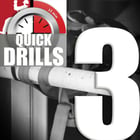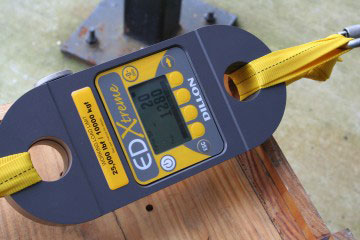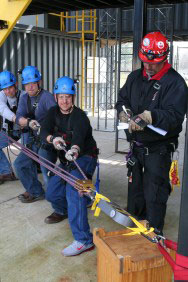
Proficiency in the use of PPE is critical to the safety of rescuers. If you can’t protect yourself, you can’t save others!
1. Disassemble the major system components of SCBA and/or SAR system and place in a room in an unorganized pile.
2. Take groups or individual team members into the room and turn out the lights.
3. Instruct them to put the systems together and don the units before exiting the room.
This forces personnel to rely on their other senses to identify the components and put the systems together. The more an individual’s senses are involved in training, the greater the retention of key elements. It is also a good emergency drill for situations that may require a better understanding of PPE at a time when vision may be restricted.
We want you to make the most of every rescue practice session, so our Roco instructors have created "Quick Drills" that can be used any time you have a few minutes to practice with your team. In order to have a well-rounded rescue team, it is so important to maximize your training time and rotate the skills practiced to keep everyone interested and involved. Make sure you cover the basics as well as any techniques or special needs that may be unique to your response area. As always, practice, practice, practice! And, make sure you have the proper training and equipment to safely and effectively do your job.
Next in this series: QUICK DRILL #3 - Knot Tying Challenge


 Report submitted by John Voinche', Sr. Vice President/COO, Roco Rescue
Report submitted by John Voinche', Sr. Vice President/COO, Roco Rescue Here at Roco, we have recently discovered a minor issue when the SKED stretcher is updated with Cobra buckles. The Cobra buckle replacement system is attached by girth-hitching the components into the grommets. The girth hitch takes up more room in the grommets than the sewn loop that was previously used. This makes it more difficult to pass the vertical bridle rope through the grommet holes that we’re accustomed to using.
Here at Roco, we have recently discovered a minor issue when the SKED stretcher is updated with Cobra buckles. The Cobra buckle replacement system is attached by girth-hitching the components into the grommets. The girth hitch takes up more room in the grommets than the sewn loop that was previously used. This makes it more difficult to pass the vertical bridle rope through the grommet holes that we’re accustomed to using. In this and upcoming articles, we want to give you an idea of the actual forces that are put on M/A systems versus theoretical forces that you may read about. What’s the difference?
In this and upcoming articles, we want to give you an idea of the actual forces that are put on M/A systems versus theoretical forces that you may read about. What’s the difference?
 One interesting fact that we can take away from these numbers is that even though the vast majority of the persons involved in the testing (random rescue students) weighedin excess of 160 lbs, they were only able to generate a maximum of 160 pounds of force on the 1⁄2-inch rope. This is largely due to the student’s ability to grasp and hold onto the 1⁄2” line before it pulled through their hands.
One interesting fact that we can take away from these numbers is that even though the vast majority of the persons involved in the testing (random rescue students) weighedin excess of 160 lbs, they were only able to generate a maximum of 160 pounds of force on the 1⁄2-inch rope. This is largely due to the student’s ability to grasp and hold onto the 1⁄2” line before it pulled through their hands. The newly revised Roco Pocket Guide features fifty-eight pages of color illustrations of the actual techniques and systems taught in our classes.
The newly revised Roco Pocket Guide features fifty-eight pages of color illustrations of the actual techniques and systems taught in our classes. 


